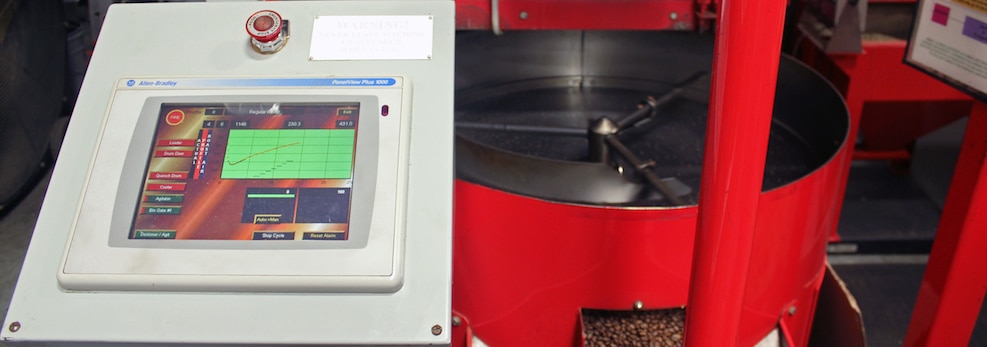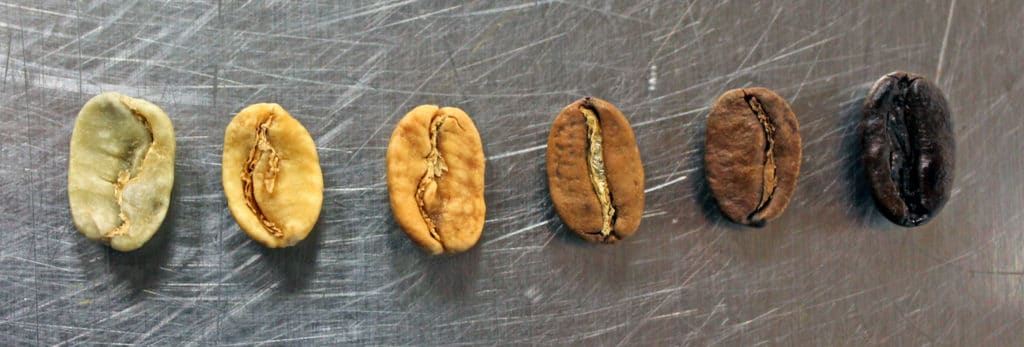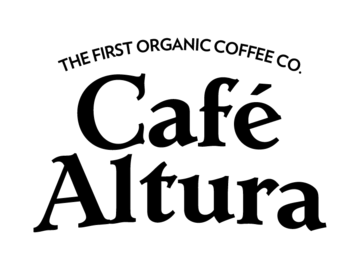
Roast Profiling Coffee
In earlier posts on this blog, I spent some time describing the factors we consider when we purchase green coffee at Café Altura, as well as the phases of the roasting process and how their manipulation can affect a coffee’s flavor. Today, I’m going to talk about how we combine these elements in our roast profiling, or how Café Altura determines roasting and flavor specification in coffee production. I will do so by giving a brief refresh on green coffee analytics and roasting techniques, and then use this information to explain how I might profile an example coffee. Roast profiling is a multifaceted and complex process, and in describing how we make use of both the properties of individual green coffees and the roasting process, I hope to give you a deeper understanding of the processes which lead to the delicious coffee in your cup.
Green Coffee Properties
As described in my previous post on green coffee analytics, understanding the physical and sensory properties of a given green coffee is a crucial step in the purchasing process. These same properties considered in purchasing can also be helpful clues when I begin to contemplate a coffee’s roast profile. The most salient properties are bean density and bean size. When taken in combination, these details tell a roaster a great deal about how a given coffee will take on heat in the roaster.

Green Coffee
All else being equal, physics dictates that a high-density coffee will take on heat more quickly than a low-density coffee. The same is true of a small bean coffee over a large-bean coffee; a smaller surface area changes temperature more rapidly than a larger surface area, despite the larger surface area’s greater thermal conductivity. This means that a high density, small bean coffee will take on heat very fast and roast very quickly, whereas a coffee with low density and a large bean size will roast more slowly.
Knowing how these properties of a given coffee bean combine and equate to behavior in the roaster is an important step in determining the optimal profile for a coffee. For example, if a coffee is very dense and its bean size is very small, I know that I can push that coffee with a large amount of heat; the coffee has the cellular structure to accept the heat without scorching, which gives me a wide variety of profiling options. On the other hand, in the inverse example of a low-density, large bean coffee, I would have to roast the coffee with gentler heat and a longer roast time to ensure that the beans heat evenly and do not scorch. Exceptions to these rules abound, of course, but this is what makes roast profiling so compelling; it is an inexact science which requires relentless experimentation to achieve success.
There is more to roast profiling than green coffee, however; understanding the way in which a coffee roasting machine operates and the different ways in which they change coffee beans as they heat them is also irreducibly crucial to coffee roasting success.
Roast Phases
As I covered in detail in a previous post The Roasting Phases of Coffee, coffee roasting is often divided into three phases for the sake of simplicity; drying, caramelization, and development. These three phases play an important role in the shaping of a coffee’s flavor profile and do so in distinct ways.

Coffee Roasting Phases
Drying phase, the first stage of the roasting process, does not directly impact a coffee’s flavor profile, but rather, sets the momentum for the entire roast, which sets up the phases which succeed it. In other words, a short drying phase will generally mean a short roast, and a long drying phase will mean a long roast. Drying phase thus affects a coffee’s flavor profile indirectly, and as such modulation of the drying phase is used as a profiling technique primarily as a means of setting up the later phases of the roast to occur in a desired timescale.
Caramelization phase is the middle phase of the roasting process, during which sugars inside of the coffee bean begin to caramelize rapidly. The length of this process has a strong effect on a coffee’s body and sweetness, as well as a peripheral affect on its acidity. A long caramelization phase generally dictates that a coffee will have heavier body, low sweetness and potentially low acidity, whereas a short caramelization phase generally means that a coffee has lighter body, high sweetness, and potentially high acidity. Modulation of this phase primarily has to do with body; it is the easiest way to place emphasis on or or compensate for a given coffee’s mouthfeel characteristics.
Development phase is the final phase of the roasting process, during which coffee cracks open and expands due to the built up pressure of water vapor inside it. Numerous ill-understood chemical reactions occur during the development phase, and the length of this phase in concert with a coffee’s finish temperature (the temperature at which it drops from the roaster and into the cooling tray) is what determines a coffee’s level of acidity and sweetness. Shorter development phases and lower drop temperatures tend to produce coffees which are high in acidity and sweetness, whereas longer development phases tend to produce coffees which are low in acidity and possess more caramelized flavor profiles. Modulation of this phase is primarily used to modulate the aforementioned characteristics.
Profiling a coffee
Now that we’ve discussed green coffee analytics and roasting technique, I will apply this information to an example coffee to illustrate how I might approach profiling a new coffee for production. For the sake of this example, let’s say that the coffee is a high density, medium bean size coffee from Colombia, and that in the sampling process I found the coffee to have primary notes of chocolate and brown sugar with a back note of red grape, medium-full body, and mild acidity.
Based on the coffee’s physical characteristics (high density and medium bean size), I would immediately gravitate towards a profile which is aggressive with heat; the coffee is dense, so it can stand up to more intense roasting. This would mean a high initial temperature and heat setting, as well as aggressive application of heat throughout the roast.
The coffee’s sensory characteristics aid me in making that general outline a little more specific. The coffee has a lot of sweet and low-toned flavors, as well as a medium-full body, so I don’t want to roast the coffee too quickly, which would minimize those elements. Instead, I want to allow the coffee to spend a decent amount of time in caramelization. This means I will temper my initial plan of aggressive heat application throughout the roast; I will still start the coffee off at a high temperature and initial heat setting but will not push it as aggressively through the back half of the roast as I might otherwise.
Extending caramelization in this manner will allow me to produce more sugar-browning type flavors and a full, rounded body to complement them. Additionally, the coffee has mild, but present acidity, which means that development can’t be too long, nor finish temperature too hot. In situations like this, i.e., when a coffee has primarily low toned flavors but retains some acidity, I tend to keep development static and modulate acidity through changing the coffee’s finish temperature. In other words, I keep the development time in a normal range for a medium-light roast, and then shoot for a finish temperature slightly lower than I might otherwise. This causes the acidity to be present while preventing it from predominating, allowing the coffee’s primary low-toned sweet notes to take center stage.
To quickly review, to emphasize this coffee’s sweetness and mild acidity, I would start it hot with a high gas setting, add a lot of heat at the start of the roast, but then pull back through caramelization and finish it lower than average with an average amount of development. It’s important to note that this profile plan would likely be the first iteration of many; any roast profile is just a guess, a shot in the dark as to what might best suit any given coffee. Effective coffee roasting requires constant learning and iteration, and even when you’ve done it for a while, new coffees can always throw you a curveball.
I hope that this look into how we profile coffees at Café Alutra has been illustrative and interesting. Stay tuned to this blog for more discussion of all things coffee.
Article By : Bret Colman, Director of Coffee / Head Roaster, Cafe Altura Organic Coffee
